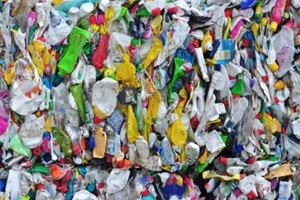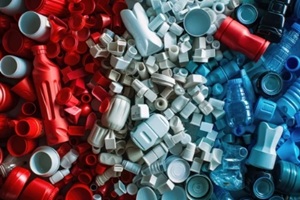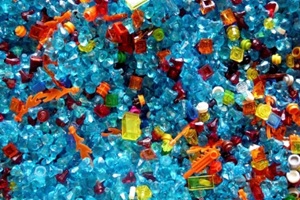June 5, 2025

Plastic recycling has long faced challenges when dealing with dark and colored materials, particularly black polystyrene, which often bypasses traditional sorting methods and ends up in landfills. Recent advancements, however, are changing the outlook. Researchers have discovered that using concentrated light sources, such as LEDs or sunlight, along with carbon black already present in these plastics, can trigger chemical breakdown processes.
The breakthrough method now enables the transformation of hard-to-recycle plastics into usable raw materials, creating new opportunities for circularity in the plastics sector and supporting broader sustainability efforts.
Researchers have demonstrated a major breakthrough in the chemical recycling of black polystyrene, using concentrated sunlight and high-intensity LEDs to drive the process forward.
Taking advantage of carbon black, an additive already embedded in many black plastics, the team successfully converted light into localized heat powerful enough to break apart polymer bonds. This method eliminates the need for introducing new helper compounds, presenting a streamlined approach that fits naturally into existing plastic compositions.
Early tests delivered strong results. Under LED light, conversion rates for black polystyrene waste reached as high as 53%. When sunlight was used, efficiencies climbed even higher, achieving up to 80%.
In practical application, the recycling setup involved grinding black polystyrene into a fine powder, placing it in sealed glass vials, and subjecting it to high-intensity white LED illumination. The carbon black within the plastic efficiently converted light into heat, initiating the breakdown of the material into valuable monomers.
When researchers replaced LEDs with concentrated sunlight, reaction rates improved significantly. Sunlight offered higher intensity and broader coverage, pushing efficiencies to new levels while presenting a scalable and cost-effective opportunity for outdoor or solar-driven plastic recycling operations.
Evaluating performance across a range of conditions is essential for any emerging recycling technology. Researchers tested their light-driven method on different types of polystyrene waste, including samples contaminated with everyday substances and mixtures of various colors.
The results demonstrated that the technique maintained high efficiency even when applied outside of controlled laboratory environments, pointing toward strong potential for real-world application across the plastics recycling sector.
Sunlight proved to be particularly effective, driving conversion rates up to 80% in black polystyrene samples. Under LED conditions, the recycling process still achieved respectable rates between 45% and 53%, depending on the level of contamination present.
Trials using waste contaminated with materials like soy sauce, canola oil, and orange juice showed only minor reductions in recycling efficiency, demonstrating the process’s resilience when dealing with realistic, post-consumer waste.
One of the most promising aspects of the study was the successful chemical recycling of black polystyrene, a material long considered difficult to process due to challenges in optical sorting.
Beyond single-color plastics, the method also proved effective when applied to a multicolored mixture of polystyrene waste, achieving conversion rates of 67% under sunlight conditions. This flexibility offers significant promise for recycling facilities tasked with handling mixed and contaminated waste streams.

Translating laboratory success into practical plastic recycling operations requires an adaptable and accessible equipment setup.
At its core, the system demands sealed reaction vials to contain the plastics during processing, light concentrators such as high-intensity LED arrays or focused solar collectors, and fine grinding equipment to prepare waste into powder form for maximum light absorption and heat transfer.
Facilities seeking to implement this method could retrofit existing recycling plants by adding modular solar fields or installing designated high-intensity LED processing stations.
Integrating this technology alongside current mechanical or chemical recycling systems would offer a streamlined pathway to handle materials traditionally considered unsuitable for recovery, broadening overall recycling capabilities without requiring a complete infrastructure overhaul.
Assessing the financial practicality of any new recycling technology is essential for wide-scale industry adoption.
Early results from light-driven plastic recycling methods show promise not only in terms of technical performance but also in operational efficiency and resource management. The ability to leverage existing additives and natural energy sources presents a path toward cost-effective, sustainable processing.
Chemical recycling that’s powered by concentrated sunlight uses significantly less energy than systems relying on standard heating technologies. Lower operational demands translate directly into reduced utility costs, particularly for facilities located in regions with high solar availability.
Beyond energy savings, reusing the carbon black already present in black polystyrene waste eliminates the need for adding new chemical agents. The new approach actively reduces material costs while promoting circularity, enabling companies to meet both financial and environmental goals without introducing additional complexity into their recycling operations.
Scaling an innovative recycling method requires careful consideration of infrastructure demands and future production needs. Light-driven recycling offers a comparatively accessible starting point, making it an appealing option for facilities looking to expand capabilities without significant upfront costs.
The initial investment for installing high-intensity LED systems or setting up solar concentrator fields remains relatively modest when compared to the capital outlays required for full-scale chemical recycling plants.
As the technology matures and adoption widens, modular expansion strategies could allow facilities to gradually increase processing capacity. Adding new light processing stations as volume demands grow would enable companies to scale efficiently while maintaining flexibility in operations.

The potential applications for light-driven chemical recycling reach across multiple segments of the plastics industry, particularly in areas with high volumes of post-consumer waste, such as food packaging and consumer goods manufacturing.
Many of these products use dark or colored plastics that are currently difficult to reclaim through standard recycling methods, presenting a valuable opportunity for companies willing to invest in innovative recovery technologies.
Early adopters of this approach stand to differentiate themselves by offering truly circular recycling solutions. Responding to increasing regulatory demands and customer expectations for sustainable practices, companies that integrate advanced plastic recycling strategies will be better positioned to lead the market and strengthen their role within a shifting plastics economy.
The ability to turn materials such as black polystyrene into usable inputs through low-cost methods helps the industry take real steps toward achieving true circularity. Facilities that embrace these advancements position themselves to meet sustainability goals while gaining a competitive edge in an increasingly demanding market arena.
At the Plastics Industry Association, PLASTICS, keeping plastics out of the environment and in the economy is central to everything that we do. Stay connected to the latest developments, engage with forward-thinking leaders, and help shape the future of sustainable plastics with us.
Join PLASTICS today for access to expert-driven insights, real-world recycling programs, and opportunities that drive industry-wide progress.
PLASTICS and the Future Leaders in Plastics (FLiP) Committee are devoted to supporting and encouraging the next generation of plastics leaders who will play a crucial role in the innovation, technology and future of the plastics industry. FLiP’s mission is to provide young professionals under the age of 40 the exposure, education and resources they need to build lifelong careers in plastics. Want to join? Want to get your employees involved? Email: [email protected]